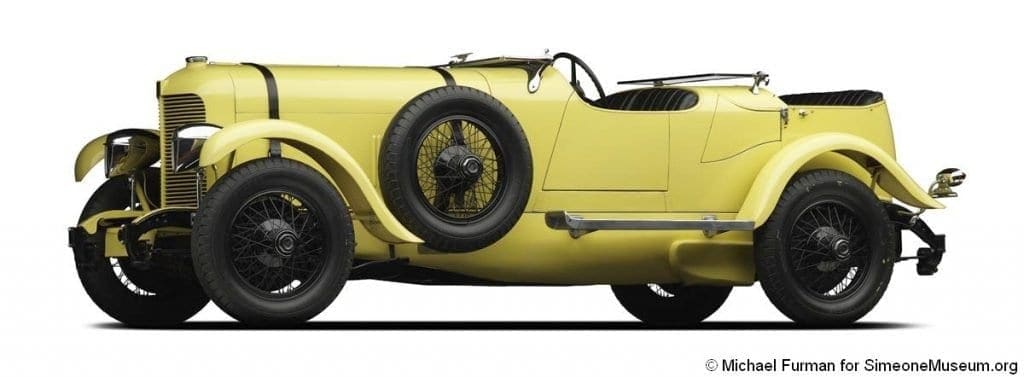The duPont factory made this car to replicate their 1929 Le Mans entrant, which nearly won the race. Only 3 of these cars still exist.
THESE CARS
The
E. Paul duPont, his young friend, Charles Moran, and dealer Alfredo J. Miranda, Jr., were all interested in competition. The Model G two-passenger speedsters had limited experience in some trials and so the group decided to enter two cars for the 1929 Le Mans Race. This required special four-passenger open bodies, later designed by Mr. Briggs Weaver and made by the Merrimac Body Company.
They entered two cars, but only one would take part. With some modifications, such as Rudge-Whitworth wheels, Dunlop tires, Champion spark plugs, they were otherwise “stock” four-passenger speedsters. This 1929 effort was remarkable because not since 1921 when the Duesenberg Brothers won a Grand Prix at Le Mans, did an American car with American drivers take part in Le Mans. In the 30s, Miles Collier tried, but with an MG auto, and in the 50s, Briggs Cunningham tried several times with Cadillacs, cars of his own making, and a variety of foreign racecars. Finally, in 1966, an American Ford GT40 MK II, won with British drivers, and in 1967 the ultimate occurred when an American car won with American drivers (Dan Gurney, A. J. Foyt).
OUR CAR
The factory originally delivered this car on August 21, 1929, to Mr. Paul Huettner of Philadelphia. It is unique among four passenger speedsters in that it most closely resembles the actual Le Mans model. This is because it was originally ordered with two hood straps, which were part of the Le Mans regulation but did not appear on any other four-passenger speedster. It also has a driver’s side door, required on the Le Mans car, but apparently not all the other DuPont four passenger speedsters had a driver’s side door. Only three DuPont four passenger speedsters exist. The interval history of this car after its original owner is unclear but after World War II it returned to a scion of the family, E. Paul du Pont. He worked on it but he died in 1950.
Years later, the auto was carefully restored and appeared proudly on the cover of The Antique Automobile. The owner used the car regularly, along with his sons, and brought it to several shows in the Delaware Valley where it was always popular.
On reviewing the car there have been very little modifications. The car is intact in every way. The brakes are larger than standard and appear to be modified to help this heavy car to stop on time. The car runs perfectly, and it makes an interesting addition to our “Americans at Le Mans” Exhibit.

(He was a) major investor and former President of the Indian Motorcycle Company in the post-Depression years from 1929 through 1945 and saved the company from financial ruin.
AMA Motorcycle Hall of Fame on Paul duPont















